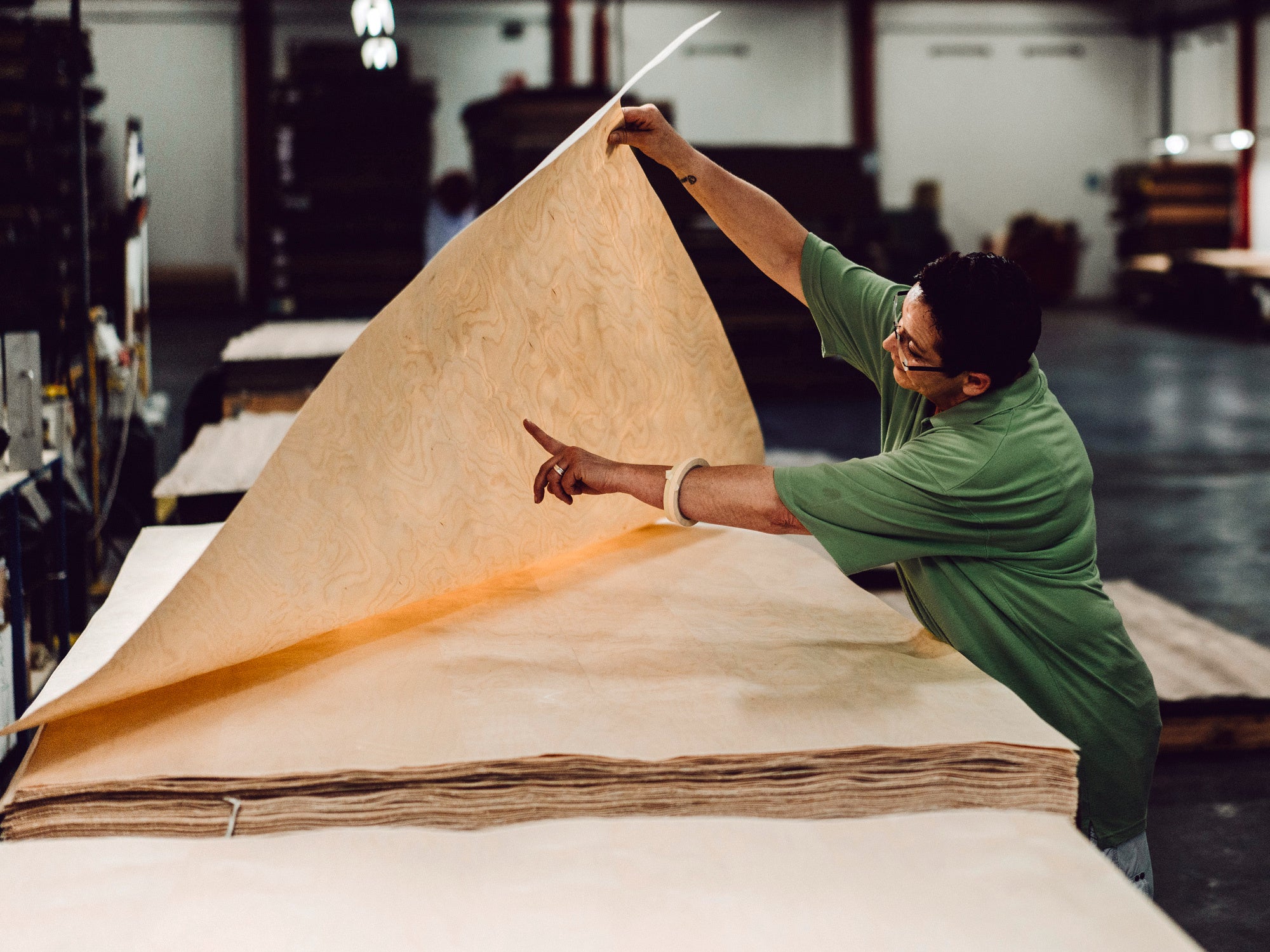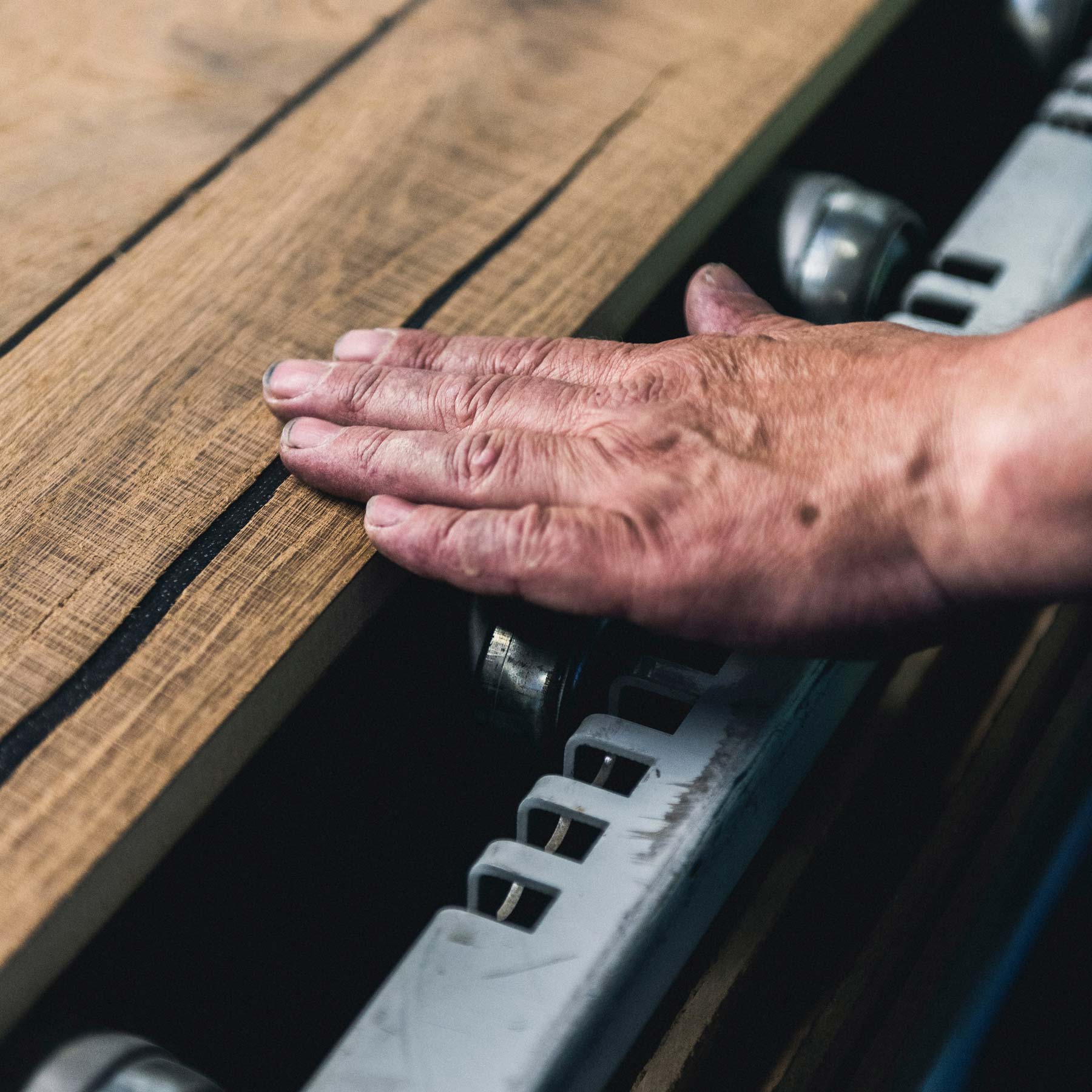
Veneer is produced by slicing a tree trunk into thin layers of natural wood using a knife, typically with a thickness of around 0.6 mm. Unlike solid wood, which is sawn, veneer maximises the utilization of the trunk with no saw loss.
A tree trunk can be cut in various ways, each yielding a different pattern and thickness.
Solid wood consists of entirely solid pieces without the addition of other materials. It maintains the natural structure, texture, and characteristics of the wood yet can be more sensitive to changes due to fluctuations in humidity and temperature.

The abundance of wood imitations makes it challenging to differentiate between genuine natural products and imitations. But wood veneer is unique.
The main difference between veneer and imitations lies in the presence of real wood. Each tree has its own distinctive appearance. It is impossible to find two identical trees in nature, resulting in significant colour and pattern variations even within the same wood species.
Alternatives like laminate or melamine (engineered material usually constructed of plastic and bonded to a composite base) only mimic this appearance and have a repetitive pattern compared to real wood veneer. No imitation can recreate touch of real wood.
These alternatives are generally more resistant to scratches, stains and discolouration. Yet at Decospan, we have dedicated years of research and development to create long-lasting, high-quality products. We strive to improve the durability and performance of our wood products, making them more resistant and easier to maintain.

Using wood as our primary resource, we prioritise sustainable management. Our commitment is to utilise veneer in all its facets, maximising the full potential of each tree trunk whilst working with legally and responsibly-sourced trees.
